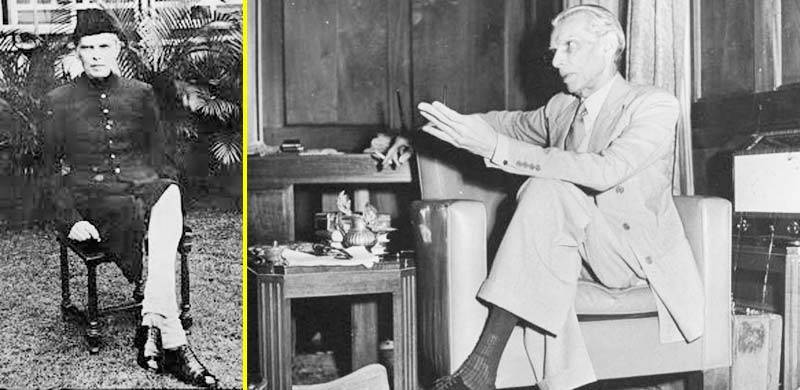
The past is not always history
In August 1947, when Pakistan came into being, its founders almost immediately rushed out to describe the new country as an entity which was different from India and had its own history dating back to antiquity.
Pakistan was the result of a political movement by Muhammad Ali Jinnah’s All India Muslim League (AIML) that had lobbied for a separate Muslim-majority country. The Pakistani sociologist Hamza Alavi argued that the Hindu-Muslim political tensions which preceded the creation of Pakistan were the outcome of economic competition between Hindu and Muslim “salaried classes” in undivided India.
The British historian WC Smith in his 1946 book Modern Islam in India: A Social Analysis, wrote that even though many members of the Muslim middle-classes in India had done well to become bureaucrats, judges, lawyers, traders and teachers; however, as a community, they had struggled to expand their economic status due to what they believed were hindrances being created by the Hindu majority.
The Muslim salaried classes were convinced that the overwhelming competition posed by their Hindu counterparts would evaporate once the AIML was able to carve out a Muslim-majority country in the region. The overriding reasons for Pakistan’s creation were therefore largely economic and political. But the new state, Pakistan, found it necessary to create a ‘master narrative.’[1] This narrative was to explain and justify Pakistan’s creation through an overarching account which was more ‘historic’ in nature.
The Muslim nationalism which became the basis of the movement that created Pakistan needed to be put in the context of Pakistani nationalism. This nationalism then required to be given an evolutionary historical context to suggest that the creation of Pakistan was more than a spontaneous occurrence and had historical roots.
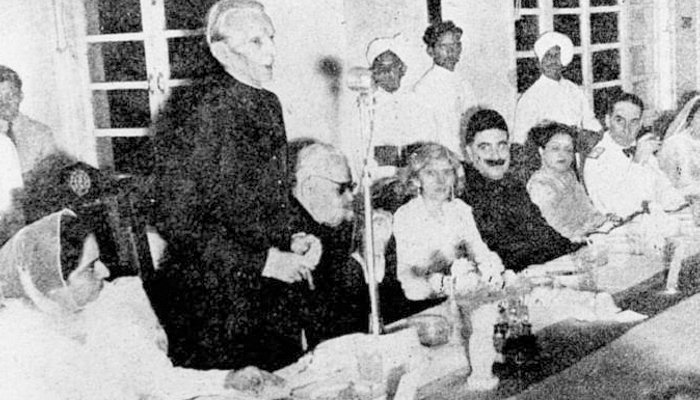
As an idea, nationalism is not more than 300 years old. It first emerged in England in the early 18th century.[2] It fully matured in the 18th century, especially during French Revolution. The Industrial Revolution in Europe (between the mid-18th and early 19th centuries) saw a radical transition in manufacturing processes which further pushed the idea of nationalism into the mainstream political and public spheres.
The Industrial Revolution triggered the growth of a more integrated economy and the expansion of the middle and merchant classes. These were not from ‘royal bloodlines’ and families, nor were they strictly attached to farmlands in specific areas, as the landed elites and peasants were. Instead, they were at the core of the emerging new integrated economy. Consequently, they began to identify themselves as being part of a nation with a shared history, language and culture. This led to an integrated identity that shaped a people’s geographical and ideological nationhood.
As this idea swept across Europe, it was eventually adopted by the middle-class intelligentsia in Asia, South America and Africa, which were colonised by the European powers. Ironically, in the event of the fall of traditional powers in their lands, this intelligentsia adopted the idea of nationalism of their colonisers to reawaken their own people by defining them as nations. Thus, various nationalist movements emerged and went a long way in dismantling colonialism and also forming new countries.
Nationalism, largely constructed on the basis of a people sharing a geopolitical entity called a country, often requires a lot more to keep people united and attached to an integrated economy, society and polity. This entails the exaggeration of certain facts and even the formulation of myths about an imagined historicity of the constructed nation and its peoples.
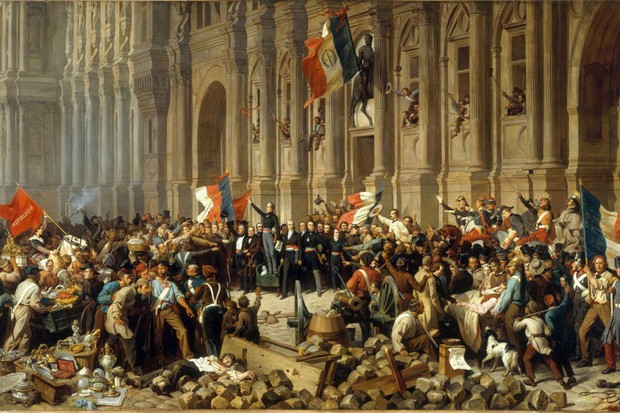
Pakistan shares centuries-old histories with a region that has become the Republic of India. A part of this history was dominated by ancient non-Muslim rulers. Also, if the region that had become India needed to be completely divorced from Pakistan’s historical narrative, then this also meant divorcing the long Muslim rule in the region whose epicentre was Delhi.
The challenge to carefully navigate around such complexities and yet be able to weave together a historical narrative inspired by a new country’s distinct nationalist impulses, was first taken by the historian I. H. Qureshi.
In his 1962 book The Muslim Community of Indo-Pakistan Subcontinent, Qureshi, perturbed that the Pakistani nationalist narrative had not yet been able to detach itself from the histories that the country as a region shared with India, claimed that the Muslims of India were always outsiders.
He wrote that they had their own cultures and traditions and happened to rule India without being entirely absorbed by the region’s ancient social and religious currents. Therefore, according to Qureshi, the Muslims of the region were ‘Muslims in India’ and not ‘Indian Muslims.’
Qureshi saw the entire history of Muslims in India as a gradual process towards the creation of Pakistan. Qureshi dialed up the notion that the region’s Muslims insisted on exhibiting their separateness. He was thus critical of the inclusive policies of the third Mughal emperor, Akbar. He was also not very forgiving of the role the Sufi saints played during Muslim rule in India because theirs was not a theological creed and was thus, according to Qureshi, absorbed by the region’s non-Muslim currents.
Originally published in 1967, A Short History of Pakistan — a compilation of essays edited by Qureshi — attempted a clean break from shared histories by concentrating on the ancient histories of only those regions that had become Pakistan. This did not mean not discussing non-Muslim pasts but just non-Muslim pasts which only existed in West and East Pakistan.
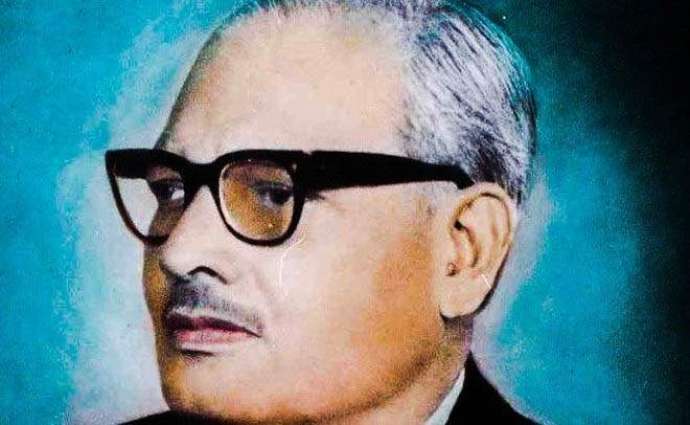
But things became even more complex when, in 1971, East Pakistan broke away to become Bangladesh. Qureshi responded by lamenting that Pakistan’s ‘historical raison d’etre’ had not been adequately communicated in school textbooks. He now offered a narrative which transcended geography. In a lecture, the historian said that countries come and go, but religions, such as Islam, stay. Thus, from 1971 onward, the ‘ideology of Pakistan’ became compulsory learning in educational institutions (embedded in a new subject called Pakistan Studies).
When Qureshi’s narrative became the basis of textbooks in the 1970s and 1980s, K.K. Aziz, a former admirer of Qureshi decided to systematically dismantle his mentor’s work. Like Qureshi, Aziz too had been a passionate Pakistani nationalist. But in the mid-1980s, distraught by the contents of textbooks, Aziz bemoaned that Qureshi, in his enthusiasm to use history to build a nationalist ideology, had corrupted the whole process of history writing in Pakistan.
Aziz had left the country in 1978, a year after Gen Zia’s reactionary military coup. He returned in 1985 and published Murder of History in which he painstakingly pointed out the many historical inaccuracies present in textbooks. Aziz felt alienated by the Pakistani nationalist narrative — a narrative he confessed he had helped Qureshi build.[3]
Aziz’s work flung open the opportunity for many other scholars and historians to emerge and challenge the accuracy of what was being taught as historical fact. In Textbooks, Nationalism and History Writing, A. Muhammad Tariq writes that, by the late 1970s and 1980s, “the historical legacy of the pre-Muslim period was disowned and the physical geography of the region became irrelevant. Pakistan was no longer to seek its historical roots and traditions in the subcontinent.”
It was as if, after the 1971 East Pakistan debacle, the state had become afraid of the history that it shared with arch-enemy India. Interestingly, decades later, this process of divorcing oneself from a shared history of a hated foe has now also become prominent in BJP-ruled India.
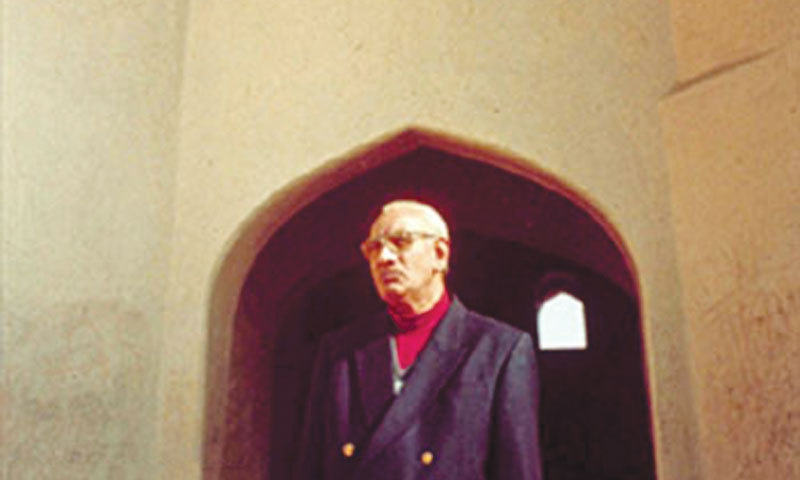
Keeping in front fates of various regions in the last hundred years or so, most political scientists agree that such ideological routes begin to erode in nations made up of various ethnic, racial and religious groups. The solution to this is a constitution, and a political ethos based entirely on civic-nationalism as opposed to one formed on the basis of a dominant ethnicity, race or religion.
Civic-nationalism promotes a national existence based on a shared and integrated economy and a pluralistic political system and state. But if a nation is based on a nationalism specific to a single religious or ethnic denomination, other communities feel repressed and alienated and begin to form their own nationalisms.
Interestingly, the process of building ethno-nationalism is similar to how states construct nationalisms based on a single dominant creed or ethnicity. Take for example the ethnic nationalisms in Pakistan. Each one was a modern national construct initiated by certain economic triggers and based on certain mythical histories.
According to Stephen Rittenberg’s Ethnicity, Nationalism, and the Pakhtuns, the roots of Pashtun nationalism mainly lie in the class tensions in the Pashtun-majority regions such as the former NWFP and Afghanistan. The tensions were between the landed Pashtun elite (the Khans) and the Pashtun bourgeoisie and petty-bourgeoisie.
These tensions gave birth to Khan Abdul Ghaffar Khan’s Khudai Khidmatgar (KK) movement in March 1930. It was a secular and left-leaning movement which tried to combine modern political ideas such as socialism and democracy and ancient Pakhtun code of ethics — the Pakhtunwali — to challenge the powerful pro-British Khans. KK became part of National Awami Partry (NAP) in Pakistan and took the same route to now oppose what it considered to be a ‘dominant Punjabi ruling elite.’ In 1986, NAP became the Awami National Party (ANP).
Modern Pashtun nationalist literature does not begin in 1930. It begins hundreds of years before, even encompassing the Pashtuns’ pre-Islamic history, thus germinating the idea that Pashtuns were an ‘ancient nation.’ The Ayub Khan dictatorship in Pakistan (1958-69) tried to neutralise Pashtun nationalism when he (being a Pashtun himself) integrated a number of Pashtuns in the country’s economic and political mainstream.
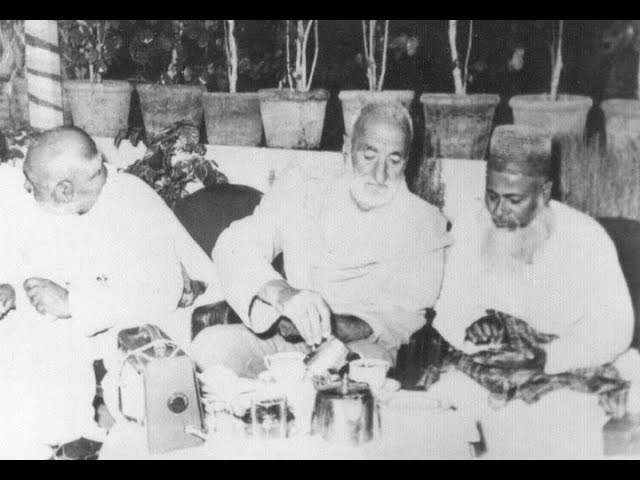
Same is the case with Sindhi nationalism. This nationalism is basically the creation of some prominent nationalist Sindhi intellectuals who, between the 1940s and early 1970s, constructed a detailed narrative that described Sindh as a ‘land of Sufis’. This was done to project the Sindhis as an ancient nation whose religious disposition was historically opposed to the one being advocated by the state of Pakistan.
However, a Sindhi prime minister, Z.A. Bhutto (1971-77), was successful in co-opting much of this narrative by making it part of Pakistan’s mainstream nationalist canon. For example, by 1975, it was the Pakistan government promoting Sindh as the ‘land of Sufis’. Secondly, after Bhutto, his party, the Pakistan Peoples Party (PPP), further usurped the Sindhi nationalist narrative by becoming a conduit between the common Sindhi and the centres of influence in Islamabad.
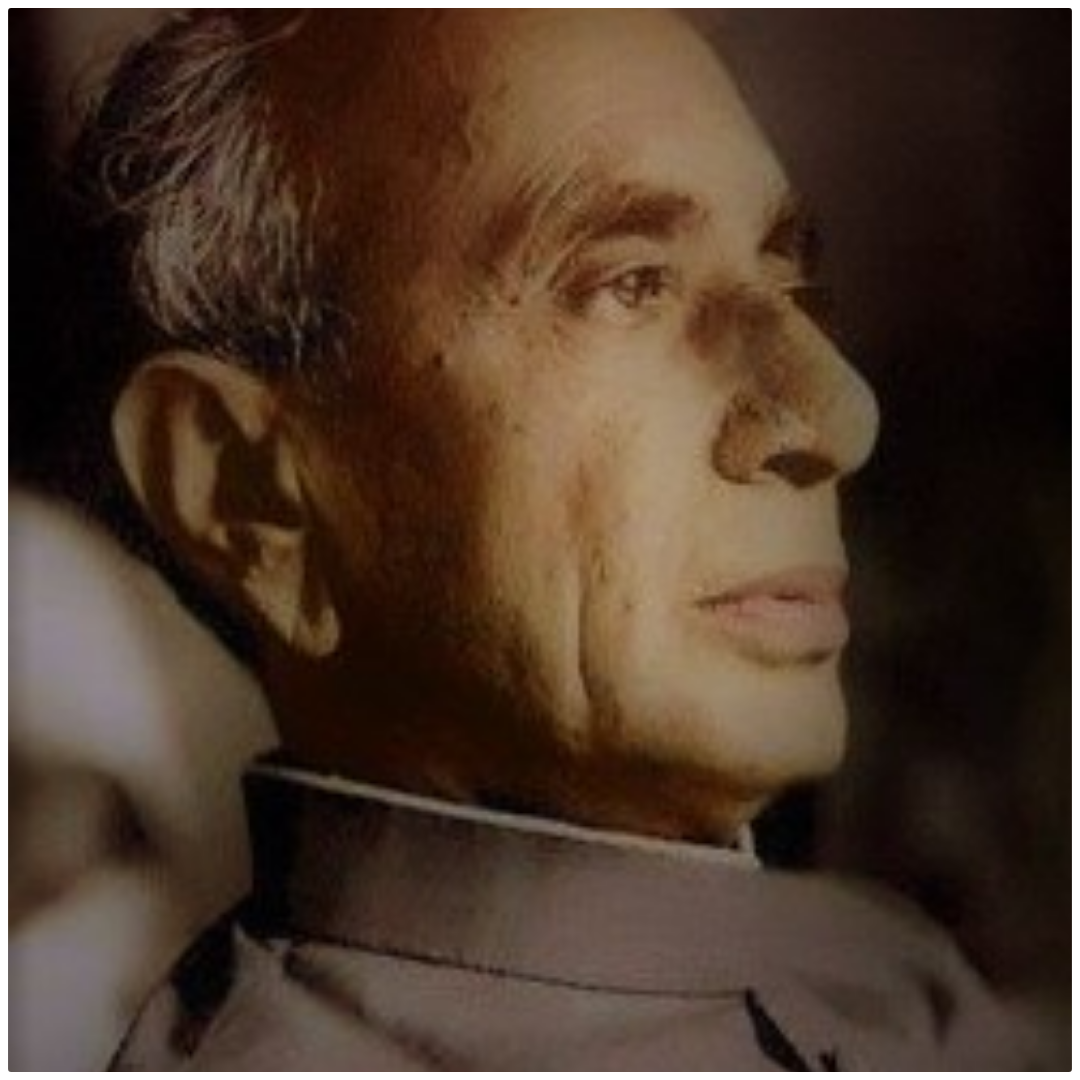
The roots of Baloch nationalism — a recent occurrence — mostly lie in an event in 1947 when the newly-formed state of Pakistan compelled the leader of Balochistan’s Kalat region to join Pakistan. But quite like Pashtun and Sindhi nationalist literatures and narratives, Baloch nationalist literature too often describes the Baloch as a people who were ‘an ancient, independent nation.’
Mohajir nationalism on the other hand does not bank on any claims of ancient nationhood. It can’t because, unlike other ethnic groups in Pakistan, Mohajirs are a non-organic community, organised as an ‘ethnic group’ of Urdu-speakers who migrated to Pakistan from various towns and cities of India. The Mohajir nationalist construction was a case of them feeling rudderless in a country with established ethnic groups and the fact that Mohajirs, who were once part of the ‘economic and bureaucratic elite’ in the 1950s, lost this position in the 1960s.
A constitution and a state based entirely on civic-nationalist and pluralistic ethos could have gone a long way in appeasing ethnic nationalisms which sprang up in Pakistan. But whereas the state tried to address this by first trying to club all ethnic groups in a suffocating ‘One Unit’ scheme, it then created extremist religious outfits to counter ethno-nationalists. The results were disastrous.
The 1973 constitution was a pretty balanced document. That is, in its original form. But the many amendments made to it between 1974 and 1998 totally changed its complexion. It now stands devoid of its original civic-nationalist character.
Orthodox, revisionists and post-revisionists
It is often pointed out by some historians and commentators that Pakistan’s founder, Mohammad Ali Jinnah, did not have a single, cohesive narrative explaining his idea of Pakistan. This is largely correct. But by citing Jinnah’s inaugural address to the country’s first Constituent Assembly in August 1947 in which he envisioned Pakistan as an inclusive and pluralistic Muslim-majority state, the liberal intelligentsia insists that Jinnah saw his creation as an inclusive and progressive entity.
However, on the other hand, those who disagree with this, often produce documented quotes of the same man in which he speaks about constructing an Islamic Republic and/or a new bastion of Islam in the shape of Pakistan.
Historiography would define this claim as ‘orthodox history’ and the previous one as ‘revisionist history.’ But before we further explore these, it is important to mention that both sets of commentators treat Jinnah as an ideologue. The truth is he was a politician, and a pretty sharp one to boot. Politicians are known to adjust and readjust their words according to the political and cultural orientation of their audiences.
So, in a Constituent Assembly that had a majority of ‘Muslim modernists’ and also some prominent non-Muslims, Jinnah explained the new country as a pluralistic entity. On the other hand, in the erstwhile NWFP (now Khyber Pakhtunkhwa), while addressing an audience of conservative Pakhtuns, he spoke about a country run by Islamic laws. Then, while talking to the Voice of America, he asserted that Pakistan was not to be a theocracy because Islam was inherently democratic, modern, and progressive.
So, as a politician, Jinnah was choosing his words carefully and then shaping them according to the nature of his audience. Orthodox historians and revisionists have for long fought a battle over his legacy through his words. But the following is how a relatively new strand of historiography would explain the discourse between the two: both are correct.
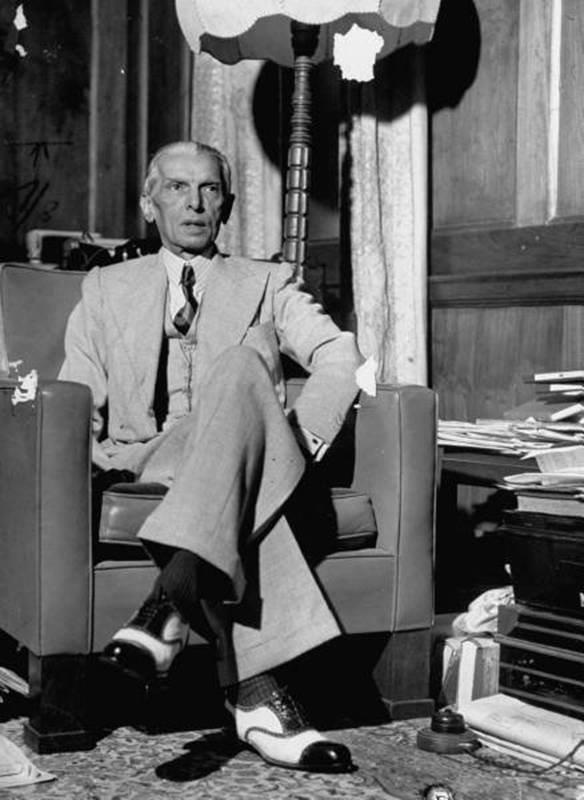
This new strand is called postrevisionism. It first began to emerge in the 1970s in the US as an ‘objective’ response to revisionist as well as orthodox historiographies. Orthodox historiography dominated history till the 1950s. It is about history that is formulated by historians and intelligentsia to justify the creation and then existence of a nation-state or a polity slotted together as a nation.
The works of the prominent national historian of Pakistan, the late I.H. Qureshi is a case in point. He authored various books which emphasised the ‘historical justification’ of the creation of Pakistan by suggesting that the national impulse in the Muslims of South Asia had developed during the 500-year-old Muslim rule in India. He saw it as an evolutionary process that culminated with the creation of Pakistan in 1947.
This thesis was adopted by the state of Pakistan and became the country’s orthodox history. What’s more, from the late 1970s, Qureshi’s thesis was pushed further still when the state, during the Gen Zia dictatorship, propped up the 8th century Arab commander Muhammad Bin Qasim as the ‘first Pakistani’.[4]
But from the mid-1980s, Pakistan’s orthodox history began to be countered by some scholars. K.K. Aziz, Sibte Hassan and Ayesha Jalal launched a severe critique of the country’s orthodox history by deconstructing it and restoring ‘facts’ which they believed had either been distorted or suppressed because they contradicted the origin story of Pakistan as propagated by the state. The work of these historians endeavoured to validate the more liberal sides of Jinnah. They also demonstrated how he had been reshaped as a quasi-Islamic ideologue by orthodox historians. This was revisionist history taking to task orthodox history.
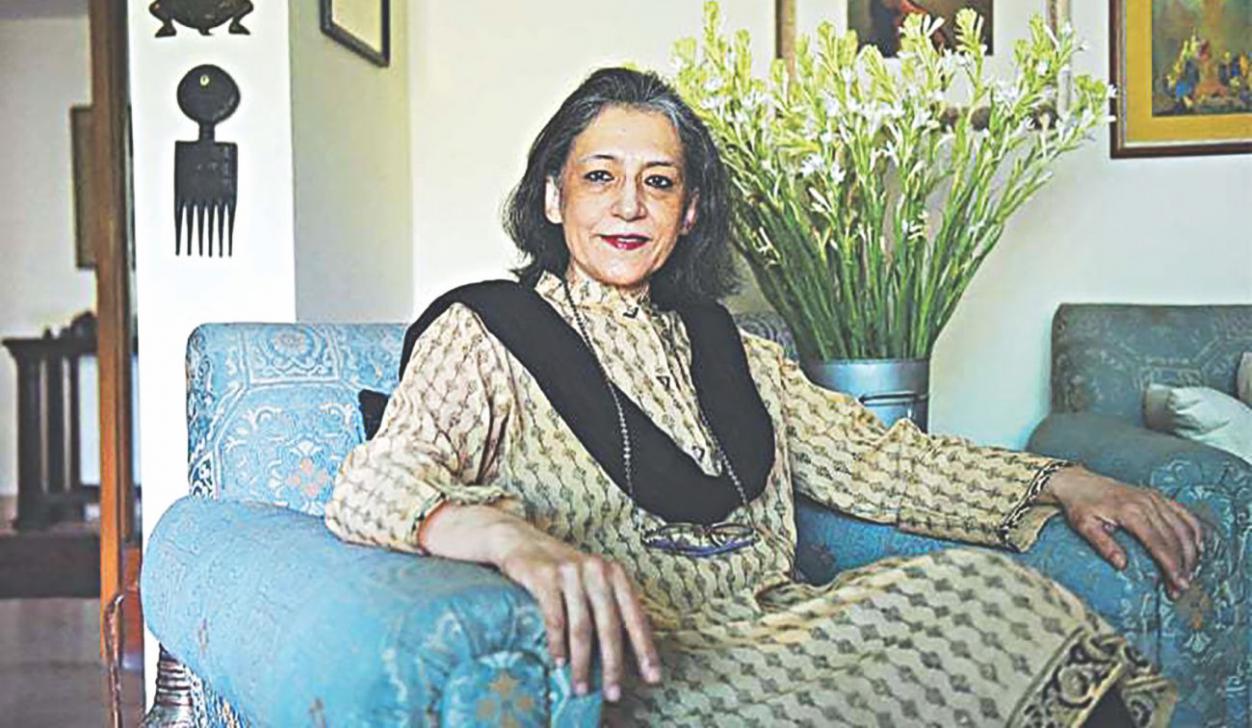
In the last two decades, revisionist history in this context has picked up momentum.
For example, in August 2015, the Sindh government decided to include Jinnah’s August 1947 speech in the curriculum. The speech, which was largely suppressed by the state since 1977, also made its way into a 2019 book on Jinnah published by the Inter-Services Public Relations (ISPR), the media wing of the Pakistan army.
But there are historians who see some inherent problems in the revisionist school of thought. This gave birth to what came to be known as post-revisionism. It largely emerged from the works of American scholars such as J.L. Gaddis and Thomas G. Peterson. While studying the origins of the Cold War between the US and Soviet Union, Gaddis and Peterson claim that both orthodox as well as revisionist historians were heavily invested in defending their respective ideologies in discussions on the Cold War.
For example, whereas orthodox historians accuse the Soviet Union of starting the Cold War ‘to undermine American democracy and freedom,’ revisionists blame the US for ‘betraying the Soviet Union after World War 2 in a bid to sideline it in the post-war order.
Gaddis and Peterson find this discourse problematic. Even though they see merit in the historic evidence presented by both the sides, they lament that the evidence was cherry-picked to defend their respective ideological dispositions. This made the orthodox and the revisionists miss out the many nuances which contributed to the start of the Cold War.
To Gaddis, these (economic and political) nuances made the Cold War inevitable and no one side could be blamed for starting it. Another problem that post-revisionists have with the revisionists is that, even though revisionists want to demystify and deconstruct the ideological edifice of orthodox history, they do this by replacing it with their own set of ideological preferences.
It thus becomes a clash between ideologies in which the important historical nuances that Gaddis was talking about, get ignored. Postrevisionists accuse revisionists of being as judgmental as orthodox historians, whereas the job of history is not to judge.
Critics of revisionism have also demonstrated that since revisionism is more about critiquing than documenting history, it has given birth to ‘historical negationism’. Also called ‘denialism,’ this renegade school of thought piggybanks on revisionist ideas to claim that horrific episodes of genocide, such as the Holocaust, never happened.
Also, since revisionists, just as orthodox historians, are largely driven by political ideologies, there is always the danger that, in the event of their preferred account of history not being accepted according to their liking, they may and do end up substantiating the history that they set out to counter. Sometimes without realising it.
For example, there is a group of Pakistani revisionists who now want Pakistani liberals to let go of Jinnah’s image as a progressive, and accept that the creation of Pakistan as a Muslim country was a mistake. This does not mean that they agree with orthodox history. But, ironically, they inadvertently end up substantiating the image of Jinnah constructed by their orthodox opponents. This is when revisionism ends up eating its own tail.
The Inconvenient Truths about Pakistan Studies.
The subject of Pakistan Studies was introduced in the early 1970s. It was first made compulsory in schools and, from the late 1970s onwards, in colleges and universities. Over the years, it has often been lambasted for promoting half-truths and — from the 1980s — even religious and racial bigotry.
Various Pakistani scholars, such as A.H. Nayyar, Ahmad Salim and Rubina Saigol, have substantiated these claims through detailed investigations of Pakistani textbooks. Indeed, the content in these tomes, especially in Pakistan Studies books, is rather alarming.
The overlying consensus in this regard is that the subject of Pakistan Studies was concocted as a reaction to the rising sentiment of ethno-nationalism in the country; and largely as a response to the violent manner in which the former East Pakistan broke away in 1971 to become Bangladesh.
According to a desperate and bruised state, the religious parties and a new populist government headed by Z.A. Bhutto, this happened because a cohesive ideology of Pakistan, based on a shared Muslim faith which transcended ethnic identities, had not been properly formulated and ingrained among the people.
So, Pakistan Studies set out to do just that, even if it had to omit certain inconvenient truths. But, as a project, it was initially not really in the hands of belligerent politico-religious scribes, even though it would become just that during the Zia dictatorship in the 1980s.
Initially, as an intellectual pursuit, it was formed by some noted historians and introduced by a ‘modernist’ state and a populist left-leaning government. But here’s the interesting bit: Those who came up with this subject eventually became its victims. Let me explain.
The creation of Pakistan Studies in the 1970s was related to what was emerging in certain prominent segments of the academia in the US and Europe at the time.
In 1961, the French philosopher Michel Foucault published Madness and Civilisation. In 1962, the American philosopher Thomas Khun published The Structure of Scientific Revolutions. In 1966, two American sociologists, Peter Berger and Thomas Luckmann, penned The Social Construction of Reality. In 1968, the American anthropologist, Carlos Castaneda, published The Teachings of Don Juan.
These books made a huge impact on the evolution of psychiatry, sociology and anthropology. They were all authored by ‘progressive’ men who were educated in some of the finest Western educational institutions which, for years, had upheld the core principles of the Age of Enlightenment, i.e. reason, rationality, and science.
Yet, these books are all vehement attacks on these principles. They claimed that truths, even scientific truths, were all constructions of power elites. Mental illness was a concept, not a truth. Reality was a social construction. Superstitions and ‘magical thinking’ can be as legitimate as scientific truths because truth was ‘relative.’
Noted American journalist and author Kurt Andersen, in his 2017 book Fantasyland, demonstrated how an attack on rationalism and science by left-leaning academics romanticised and then legitimised irrationalism as an ‘anti-establishment’ pursuit.’
Anderson quotes the famous author and intellectual Paul Goodman lamenting that college students were no more interested in gathering evidence to tell sociological truths because they believed all such truths were created to empower the ruling elites.
In 1947, two left-leaning German philosophers and sociologists, Theodore Adorno and Max Horkheimer, got the ball rolling with their book Dialectic of Enlightenment, in which they critiqued the ‘Enlightenment project’ as one of the reasons behind the rise of Nazism in Germany. This meant that 19th century racist and anti-rationalist ideas that had evolved into becoming major fascist ideologies in the 20th century were now absolved of all blame.
Therefore, it was only a matter of time till what began as an anti-rationalist onslaught by the academic left would eventually be embraced by their rightist counterparts. Since truth was now relative, and no amount of evidence could prove otherwise, one could spout anything and call it the truth without being challenged.
But those on the right became better at using this mindset. The left and the liberal, now entirely engulfed by concepts such as post-modernism, post-structuralism, relativism, etc., were caught in an intellectual quagmire. The result: a dialogue between the left and the right which produces zero synthesis, because it largely constitutes monologues, rebounded by echo chambers, contradictions and anger that has become a parody of itself.
Pakistan Studies was born in the 1970s in an intellectual environment that had become dominated by former rationalists turned anti-rationalists. It offered ‘truths’ concocted to appease Pakistan’s post-1971 existentialist crises. ‘Truths’ formed by respected historians and a leftist regime but then wholeheartedly embraced by the rightists, who then went on to concoct another ‘truth’: i.e. The left/liberals broke Pakistan. As post-modernists would suggest, it’s ‘their truth’ and you’ll be a spoilsport to deny it.
[1] AU Qasmi: A Master Narrative for the History of Pakistan: Tracing the origins of an ideological agenda. (Modern Asian Studies, July 2019)
[2] L. Colley: Britons: Forging the Nation: 1707-1837 (Yale University Press, 2009)
[3] Daily Times (June, 2009)
[4] MA Asif in Modern History of Pakistan (ed. Roger D. Long) (Oxford University Press, 2015)
In August 1947, when Pakistan came into being, its founders almost immediately rushed out to describe the new country as an entity which was different from India and had its own history dating back to antiquity.
Pakistan was the result of a political movement by Muhammad Ali Jinnah’s All India Muslim League (AIML) that had lobbied for a separate Muslim-majority country. The Pakistani sociologist Hamza Alavi argued that the Hindu-Muslim political tensions which preceded the creation of Pakistan were the outcome of economic competition between Hindu and Muslim “salaried classes” in undivided India.
The British historian WC Smith in his 1946 book Modern Islam in India: A Social Analysis, wrote that even though many members of the Muslim middle-classes in India had done well to become bureaucrats, judges, lawyers, traders and teachers; however, as a community, they had struggled to expand their economic status due to what they believed were hindrances being created by the Hindu majority.
The Muslim salaried classes were convinced that the overwhelming competition posed by their Hindu counterparts would evaporate once the AIML was able to carve out a Muslim-majority country in the region. The overriding reasons for Pakistan’s creation were therefore largely economic and political. But the new state, Pakistan, found it necessary to create a ‘master narrative.’[1] This narrative was to explain and justify Pakistan’s creation through an overarching account which was more ‘historic’ in nature.
The Muslim nationalism which became the basis of the movement that created Pakistan needed to be put in the context of Pakistani nationalism. This nationalism then required to be given an evolutionary historical context to suggest that the creation of Pakistan was more than a spontaneous occurrence and had historical roots.

Lahore, 1940: Jinnah iterating his party’s desire to create a Muslim-majority country.
As an idea, nationalism is not more than 300 years old. It first emerged in England in the early 18th century.[2] It fully matured in the 18th century, especially during French Revolution. The Industrial Revolution in Europe (between the mid-18th and early 19th centuries) saw a radical transition in manufacturing processes which further pushed the idea of nationalism into the mainstream political and public spheres.
The Industrial Revolution triggered the growth of a more integrated economy and the expansion of the middle and merchant classes. These were not from ‘royal bloodlines’ and families, nor were they strictly attached to farmlands in specific areas, as the landed elites and peasants were. Instead, they were at the core of the emerging new integrated economy. Consequently, they began to identify themselves as being part of a nation with a shared history, language and culture. This led to an integrated identity that shaped a people’s geographical and ideological nationhood.
As this idea swept across Europe, it was eventually adopted by the middle-class intelligentsia in Asia, South America and Africa, which were colonised by the European powers. Ironically, in the event of the fall of traditional powers in their lands, this intelligentsia adopted the idea of nationalism of their colonisers to reawaken their own people by defining them as nations. Thus, various nationalist movements emerged and went a long way in dismantling colonialism and also forming new countries.
Nationalism, largely constructed on the basis of a people sharing a geopolitical entity called a country, often requires a lot more to keep people united and attached to an integrated economy, society and polity. This entails the exaggeration of certain facts and even the formulation of myths about an imagined historicity of the constructed nation and its peoples.

Lamartine in front of the Town Hall of Paris rejects the red flag on 25 February 1848. Found in the Collection of Musée Carnavalet, Paris. (Photo by Fine Art Images/Heritage Images/Getty Images)
Pakistan shares centuries-old histories with a region that has become the Republic of India. A part of this history was dominated by ancient non-Muslim rulers. Also, if the region that had become India needed to be completely divorced from Pakistan’s historical narrative, then this also meant divorcing the long Muslim rule in the region whose epicentre was Delhi.
The challenge to carefully navigate around such complexities and yet be able to weave together a historical narrative inspired by a new country’s distinct nationalist impulses, was first taken by the historian I. H. Qureshi.
In his 1962 book The Muslim Community of Indo-Pakistan Subcontinent, Qureshi, perturbed that the Pakistani nationalist narrative had not yet been able to detach itself from the histories that the country as a region shared with India, claimed that the Muslims of India were always outsiders.
He wrote that they had their own cultures and traditions and happened to rule India without being entirely absorbed by the region’s ancient social and religious currents. Therefore, according to Qureshi, the Muslims of the region were ‘Muslims in India’ and not ‘Indian Muslims.’
Qureshi saw the entire history of Muslims in India as a gradual process towards the creation of Pakistan. Qureshi dialed up the notion that the region’s Muslims insisted on exhibiting their separateness. He was thus critical of the inclusive policies of the third Mughal emperor, Akbar. He was also not very forgiving of the role the Sufi saints played during Muslim rule in India because theirs was not a theological creed and was thus, according to Qureshi, absorbed by the region’s non-Muslim currents.
Originally published in 1967, A Short History of Pakistan — a compilation of essays edited by Qureshi — attempted a clean break from shared histories by concentrating on the ancient histories of only those regions that had become Pakistan. This did not mean not discussing non-Muslim pasts but just non-Muslim pasts which only existed in West and East Pakistan.

IH Qureshi.
But things became even more complex when, in 1971, East Pakistan broke away to become Bangladesh. Qureshi responded by lamenting that Pakistan’s ‘historical raison d’etre’ had not been adequately communicated in school textbooks. He now offered a narrative which transcended geography. In a lecture, the historian said that countries come and go, but religions, such as Islam, stay. Thus, from 1971 onward, the ‘ideology of Pakistan’ became compulsory learning in educational institutions (embedded in a new subject called Pakistan Studies).
When Qureshi’s narrative became the basis of textbooks in the 1970s and 1980s, K.K. Aziz, a former admirer of Qureshi decided to systematically dismantle his mentor’s work. Like Qureshi, Aziz too had been a passionate Pakistani nationalist. But in the mid-1980s, distraught by the contents of textbooks, Aziz bemoaned that Qureshi, in his enthusiasm to use history to build a nationalist ideology, had corrupted the whole process of history writing in Pakistan.
Aziz had left the country in 1978, a year after Gen Zia’s reactionary military coup. He returned in 1985 and published Murder of History in which he painstakingly pointed out the many historical inaccuracies present in textbooks. Aziz felt alienated by the Pakistani nationalist narrative — a narrative he confessed he had helped Qureshi build.[3]
Aziz’s work flung open the opportunity for many other scholars and historians to emerge and challenge the accuracy of what was being taught as historical fact. In Textbooks, Nationalism and History Writing, A. Muhammad Tariq writes that, by the late 1970s and 1980s, “the historical legacy of the pre-Muslim period was disowned and the physical geography of the region became irrelevant. Pakistan was no longer to seek its historical roots and traditions in the subcontinent.”
It was as if, after the 1971 East Pakistan debacle, the state had become afraid of the history that it shared with arch-enemy India. Interestingly, decades later, this process of divorcing oneself from a shared history of a hated foe has now also become prominent in BJP-ruled India.

KK Aziz.
Keeping in front fates of various regions in the last hundred years or so, most political scientists agree that such ideological routes begin to erode in nations made up of various ethnic, racial and religious groups. The solution to this is a constitution, and a political ethos based entirely on civic-nationalism as opposed to one formed on the basis of a dominant ethnicity, race or religion.
Civic-nationalism promotes a national existence based on a shared and integrated economy and a pluralistic political system and state. But if a nation is based on a nationalism specific to a single religious or ethnic denomination, other communities feel repressed and alienated and begin to form their own nationalisms.
Interestingly, the process of building ethno-nationalism is similar to how states construct nationalisms based on a single dominant creed or ethnicity. Take for example the ethnic nationalisms in Pakistan. Each one was a modern national construct initiated by certain economic triggers and based on certain mythical histories.
According to Stephen Rittenberg’s Ethnicity, Nationalism, and the Pakhtuns, the roots of Pashtun nationalism mainly lie in the class tensions in the Pashtun-majority regions such as the former NWFP and Afghanistan. The tensions were between the landed Pashtun elite (the Khans) and the Pashtun bourgeoisie and petty-bourgeoisie.
These tensions gave birth to Khan Abdul Ghaffar Khan’s Khudai Khidmatgar (KK) movement in March 1930. It was a secular and left-leaning movement which tried to combine modern political ideas such as socialism and democracy and ancient Pakhtun code of ethics — the Pakhtunwali — to challenge the powerful pro-British Khans. KK became part of National Awami Partry (NAP) in Pakistan and took the same route to now oppose what it considered to be a ‘dominant Punjabi ruling elite.’ In 1986, NAP became the Awami National Party (ANP).
Modern Pashtun nationalist literature does not begin in 1930. It begins hundreds of years before, even encompassing the Pashtuns’ pre-Islamic history, thus germinating the idea that Pashtuns were an ‘ancient nation.’ The Ayub Khan dictatorship in Pakistan (1958-69) tried to neutralise Pashtun nationalism when he (being a Pashtun himself) integrated a number of Pashtuns in the country’s economic and political mainstream.

Bacha Khan (centre) the founder of Pashtun nationalism in South Asia.
Same is the case with Sindhi nationalism. This nationalism is basically the creation of some prominent nationalist Sindhi intellectuals who, between the 1940s and early 1970s, constructed a detailed narrative that described Sindh as a ‘land of Sufis’. This was done to project the Sindhis as an ancient nation whose religious disposition was historically opposed to the one being advocated by the state of Pakistan.
However, a Sindhi prime minister, Z.A. Bhutto (1971-77), was successful in co-opting much of this narrative by making it part of Pakistan’s mainstream nationalist canon. For example, by 1975, it was the Pakistan government promoting Sindh as the ‘land of Sufis’. Secondly, after Bhutto, his party, the Pakistan Peoples Party (PPP), further usurped the Sindhi nationalist narrative by becoming a conduit between the common Sindhi and the centres of influence in Islamabad.

The revered Sindhi nationalist scholar, GM Syed.
The roots of Baloch nationalism — a recent occurrence — mostly lie in an event in 1947 when the newly-formed state of Pakistan compelled the leader of Balochistan’s Kalat region to join Pakistan. But quite like Pashtun and Sindhi nationalist literatures and narratives, Baloch nationalist literature too often describes the Baloch as a people who were ‘an ancient, independent nation.’
Mohajir nationalism on the other hand does not bank on any claims of ancient nationhood. It can’t because, unlike other ethnic groups in Pakistan, Mohajirs are a non-organic community, organised as an ‘ethnic group’ of Urdu-speakers who migrated to Pakistan from various towns and cities of India. The Mohajir nationalist construction was a case of them feeling rudderless in a country with established ethnic groups and the fact that Mohajirs, who were once part of the ‘economic and bureaucratic elite’ in the 1950s, lost this position in the 1960s.
A constitution and a state based entirely on civic-nationalist and pluralistic ethos could have gone a long way in appeasing ethnic nationalisms which sprang up in Pakistan. But whereas the state tried to address this by first trying to club all ethnic groups in a suffocating ‘One Unit’ scheme, it then created extremist religious outfits to counter ethno-nationalists. The results were disastrous.
The 1973 constitution was a pretty balanced document. That is, in its original form. But the many amendments made to it between 1974 and 1998 totally changed its complexion. It now stands devoid of its original civic-nationalist character.
Orthodox, revisionists and post-revisionists
It is often pointed out by some historians and commentators that Pakistan’s founder, Mohammad Ali Jinnah, did not have a single, cohesive narrative explaining his idea of Pakistan. This is largely correct. But by citing Jinnah’s inaugural address to the country’s first Constituent Assembly in August 1947 in which he envisioned Pakistan as an inclusive and pluralistic Muslim-majority state, the liberal intelligentsia insists that Jinnah saw his creation as an inclusive and progressive entity.
However, on the other hand, those who disagree with this, often produce documented quotes of the same man in which he speaks about constructing an Islamic Republic and/or a new bastion of Islam in the shape of Pakistan.
Historiography would define this claim as ‘orthodox history’ and the previous one as ‘revisionist history.’ But before we further explore these, it is important to mention that both sets of commentators treat Jinnah as an ideologue. The truth is he was a politician, and a pretty sharp one to boot. Politicians are known to adjust and readjust their words according to the political and cultural orientation of their audiences.
So, in a Constituent Assembly that had a majority of ‘Muslim modernists’ and also some prominent non-Muslims, Jinnah explained the new country as a pluralistic entity. On the other hand, in the erstwhile NWFP (now Khyber Pakhtunkhwa), while addressing an audience of conservative Pakhtuns, he spoke about a country run by Islamic laws. Then, while talking to the Voice of America, he asserted that Pakistan was not to be a theocracy because Islam was inherently democratic, modern, and progressive.
So, as a politician, Jinnah was choosing his words carefully and then shaping them according to the nature of his audience. Orthodox historians and revisionists have for long fought a battle over his legacy through his words. But the following is how a relatively new strand of historiography would explain the discourse between the two: both are correct.

Mr. Jinnah.
This new strand is called postrevisionism. It first began to emerge in the 1970s in the US as an ‘objective’ response to revisionist as well as orthodox historiographies. Orthodox historiography dominated history till the 1950s. It is about history that is formulated by historians and intelligentsia to justify the creation and then existence of a nation-state or a polity slotted together as a nation.
The works of the prominent national historian of Pakistan, the late I.H. Qureshi is a case in point. He authored various books which emphasised the ‘historical justification’ of the creation of Pakistan by suggesting that the national impulse in the Muslims of South Asia had developed during the 500-year-old Muslim rule in India. He saw it as an evolutionary process that culminated with the creation of Pakistan in 1947.
This thesis was adopted by the state of Pakistan and became the country’s orthodox history. What’s more, from the late 1970s, Qureshi’s thesis was pushed further still when the state, during the Gen Zia dictatorship, propped up the 8th century Arab commander Muhammad Bin Qasim as the ‘first Pakistani’.[4]
But from the mid-1980s, Pakistan’s orthodox history began to be countered by some scholars. K.K. Aziz, Sibte Hassan and Ayesha Jalal launched a severe critique of the country’s orthodox history by deconstructing it and restoring ‘facts’ which they believed had either been distorted or suppressed because they contradicted the origin story of Pakistan as propagated by the state. The work of these historians endeavoured to validate the more liberal sides of Jinnah. They also demonstrated how he had been reshaped as a quasi-Islamic ideologue by orthodox historians. This was revisionist history taking to task orthodox history.

Ayesha Jalal.
In the last two decades, revisionist history in this context has picked up momentum.
For example, in August 2015, the Sindh government decided to include Jinnah’s August 1947 speech in the curriculum. The speech, which was largely suppressed by the state since 1977, also made its way into a 2019 book on Jinnah published by the Inter-Services Public Relations (ISPR), the media wing of the Pakistan army.
But there are historians who see some inherent problems in the revisionist school of thought. This gave birth to what came to be known as post-revisionism. It largely emerged from the works of American scholars such as J.L. Gaddis and Thomas G. Peterson. While studying the origins of the Cold War between the US and Soviet Union, Gaddis and Peterson claim that both orthodox as well as revisionist historians were heavily invested in defending their respective ideologies in discussions on the Cold War.
For example, whereas orthodox historians accuse the Soviet Union of starting the Cold War ‘to undermine American democracy and freedom,’ revisionists blame the US for ‘betraying the Soviet Union after World War 2 in a bid to sideline it in the post-war order.
Gaddis and Peterson find this discourse problematic. Even though they see merit in the historic evidence presented by both the sides, they lament that the evidence was cherry-picked to defend their respective ideological dispositions. This made the orthodox and the revisionists miss out the many nuances which contributed to the start of the Cold War.
To Gaddis, these (economic and political) nuances made the Cold War inevitable and no one side could be blamed for starting it. Another problem that post-revisionists have with the revisionists is that, even though revisionists want to demystify and deconstruct the ideological edifice of orthodox history, they do this by replacing it with their own set of ideological preferences.
It thus becomes a clash between ideologies in which the important historical nuances that Gaddis was talking about, get ignored. Postrevisionists accuse revisionists of being as judgmental as orthodox historians, whereas the job of history is not to judge.
Critics of revisionism have also demonstrated that since revisionism is more about critiquing than documenting history, it has given birth to ‘historical negationism’. Also called ‘denialism,’ this renegade school of thought piggybanks on revisionist ideas to claim that horrific episodes of genocide, such as the Holocaust, never happened.
Also, since revisionists, just as orthodox historians, are largely driven by political ideologies, there is always the danger that, in the event of their preferred account of history not being accepted according to their liking, they may and do end up substantiating the history that they set out to counter. Sometimes without realising it.
For example, there is a group of Pakistani revisionists who now want Pakistani liberals to let go of Jinnah’s image as a progressive, and accept that the creation of Pakistan as a Muslim country was a mistake. This does not mean that they agree with orthodox history. But, ironically, they inadvertently end up substantiating the image of Jinnah constructed by their orthodox opponents. This is when revisionism ends up eating its own tail.
The Inconvenient Truths about Pakistan Studies.
The subject of Pakistan Studies was introduced in the early 1970s. It was first made compulsory in schools and, from the late 1970s onwards, in colleges and universities. Over the years, it has often been lambasted for promoting half-truths and — from the 1980s — even religious and racial bigotry.
Various Pakistani scholars, such as A.H. Nayyar, Ahmad Salim and Rubina Saigol, have substantiated these claims through detailed investigations of Pakistani textbooks. Indeed, the content in these tomes, especially in Pakistan Studies books, is rather alarming.
The overlying consensus in this regard is that the subject of Pakistan Studies was concocted as a reaction to the rising sentiment of ethno-nationalism in the country; and largely as a response to the violent manner in which the former East Pakistan broke away in 1971 to become Bangladesh.
According to a desperate and bruised state, the religious parties and a new populist government headed by Z.A. Bhutto, this happened because a cohesive ideology of Pakistan, based on a shared Muslim faith which transcended ethnic identities, had not been properly formulated and ingrained among the people.
So, Pakistan Studies set out to do just that, even if it had to omit certain inconvenient truths. But, as a project, it was initially not really in the hands of belligerent politico-religious scribes, even though it would become just that during the Zia dictatorship in the 1980s.
Initially, as an intellectual pursuit, it was formed by some noted historians and introduced by a ‘modernist’ state and a populist left-leaning government. But here’s the interesting bit: Those who came up with this subject eventually became its victims. Let me explain.
The creation of Pakistan Studies in the 1970s was related to what was emerging in certain prominent segments of the academia in the US and Europe at the time.
In 1961, the French philosopher Michel Foucault published Madness and Civilisation. In 1962, the American philosopher Thomas Khun published The Structure of Scientific Revolutions. In 1966, two American sociologists, Peter Berger and Thomas Luckmann, penned The Social Construction of Reality. In 1968, the American anthropologist, Carlos Castaneda, published The Teachings of Don Juan.
These books made a huge impact on the evolution of psychiatry, sociology and anthropology. They were all authored by ‘progressive’ men who were educated in some of the finest Western educational institutions which, for years, had upheld the core principles of the Age of Enlightenment, i.e. reason, rationality, and science.
Yet, these books are all vehement attacks on these principles. They claimed that truths, even scientific truths, were all constructions of power elites. Mental illness was a concept, not a truth. Reality was a social construction. Superstitions and ‘magical thinking’ can be as legitimate as scientific truths because truth was ‘relative.’
Noted American journalist and author Kurt Andersen, in his 2017 book Fantasyland, demonstrated how an attack on rationalism and science by left-leaning academics romanticised and then legitimised irrationalism as an ‘anti-establishment’ pursuit.’
Anderson quotes the famous author and intellectual Paul Goodman lamenting that college students were no more interested in gathering evidence to tell sociological truths because they believed all such truths were created to empower the ruling elites.
In 1947, two left-leaning German philosophers and sociologists, Theodore Adorno and Max Horkheimer, got the ball rolling with their book Dialectic of Enlightenment, in which they critiqued the ‘Enlightenment project’ as one of the reasons behind the rise of Nazism in Germany. This meant that 19th century racist and anti-rationalist ideas that had evolved into becoming major fascist ideologies in the 20th century were now absolved of all blame.
Therefore, it was only a matter of time till what began as an anti-rationalist onslaught by the academic left would eventually be embraced by their rightist counterparts. Since truth was now relative, and no amount of evidence could prove otherwise, one could spout anything and call it the truth without being challenged.
But those on the right became better at using this mindset. The left and the liberal, now entirely engulfed by concepts such as post-modernism, post-structuralism, relativism, etc., were caught in an intellectual quagmire. The result: a dialogue between the left and the right which produces zero synthesis, because it largely constitutes monologues, rebounded by echo chambers, contradictions and anger that has become a parody of itself.
Pakistan Studies was born in the 1970s in an intellectual environment that had become dominated by former rationalists turned anti-rationalists. It offered ‘truths’ concocted to appease Pakistan’s post-1971 existentialist crises. ‘Truths’ formed by respected historians and a leftist regime but then wholeheartedly embraced by the rightists, who then went on to concoct another ‘truth’: i.e. The left/liberals broke Pakistan. As post-modernists would suggest, it’s ‘their truth’ and you’ll be a spoilsport to deny it.
[1] AU Qasmi: A Master Narrative for the History of Pakistan: Tracing the origins of an ideological agenda. (Modern Asian Studies, July 2019)
[2] L. Colley: Britons: Forging the Nation: 1707-1837 (Yale University Press, 2009)
[3] Daily Times (June, 2009)
[4] MA Asif in Modern History of Pakistan (ed. Roger D. Long) (Oxford University Press, 2015)
